Frances P. Porcher, M.D.
Porcher, Francis Peyre (1825-1895)
View the rare book by Dr. Porcher in this collection
Name: F. P. Porcher
Death date: Nov 19, 1895
Place of death: Charleston, SC
Type of practice: Allopath
Journal of the American Medical Association Citation: 25:1108 |
|
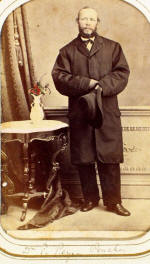
Francis Porcher
|
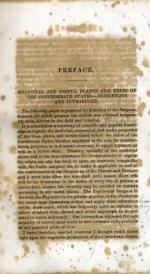
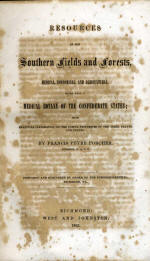

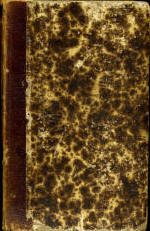
Resources of the Southern Fields and
Forests: This is the original
Confederate published edition, dated 1863. Prepared and
published by order of the Surgeon-General, Richmond, Virginia, Original marbled boards, and
marked spine. Click here to see the
RARE
original book in the collection. |
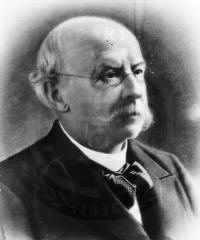 Resources
of the southern fields and forests… being also a medical botany of the
Confederate States… Charleston: Evans & Cogswell, 1863. Resources
of the southern fields and forests… being also a medical botany of the
Confederate States… Charleston: Evans & Cogswell, 1863.
Francis Porcher, valedictorian of his 1847 graduating class at the
Medical College of the State of South Carolina and well-respected writer
of several works on the medicinal properties of plants, was the ideal
person for Confederate Surgeon General Samuel Moore to assign the
important project of preparing a treatise on the indigenous plants of
the South for the Army. Porcher was born and educated in South Carolina.
After his graduation from medical school, he continued his education in
Paris and Florence, and returned to this country in 1849. During the
next few years, he published several works on the subjects of botanicals
and medicine, maintained a private practice, co-founded the Charleston
Preparatory Medical School in 1852, and traveled again to Europe,
visiting many hospitals along the way. Later in the 1850s, he became
professor of clinical medicine and materia medica and therapeutics at
his alma mater. He was an editor of the “Charleston Medical Journal and
Review” for five years and an attending physician at the Marine Hospital
in Charleston. Despite all his pre-war responsibilities, Porcher joined
the Confederate Army at the war’s start, and remained in military
service until the end (Atkinson 58; Kelly & Burrage 975; Rutkow, Resources of the Southern Field, v-vii).
Porcher
started out the war as surgeon to the Holcombe Legion, later moving to the Naval
Hospital at Norfolk, Virginia, and concluding at the South Carolina Hospital in
Petersburg, Virginia. Shortly after the outbreak of war, a Northern blockade of
Confederate ports prevented access to European medicines. Aware of Porcher’s
background in botany, Surgeon General Samuel Preston Moore asked him to survey
the plants of the South in an effort to find local medicines for the Confederate
troops. He was temporarily excused from field and hospital duty to work on this
project. The Reynolds Historical Library has a first edition of the resulting
1863 publication, Resources of the southern fields and forests, a
comprehensive listing of all regional plant life, with an analysis of uses (Freemon
112). It was the first extensive study of Southern indigenous plants, and it was
the only regional materia medica resource available to the Confederacy. But most
importantly, even given the doubtful efficacy of its medicinal recommendations,
it provided the Southern states with necessary information for surviving off
their homeland during the war with a valuable listing of economically useful
botanicals (Norman 1865.1).
When peace
returned, Porcher went back to South Carolina and worked for the City Hospital
for the next twenty-one years. He also resumed his academic positions and made
many written contributions to the medical field, especially on the topic of
yellow fever. Porcher was president of the South Carolina Medical Association in
1872, vice president of the American Medical Association in 1879, and an
associate fellow of the College of Physicians of Philadelphia. He was one of a
select few physicians chosen to represent the United States at international
medical conferences in Berlin and Rome, and he served as president of the
general medicine section of the Pan-American Congress in 1892 (Atkinson 58;
Kelly & Burrage 975; Rutkow, Resources of the Southern Field, viii).
Source: Reynolds Historical Library Major
Figures in Civil War Medicine
In an attempt to
blunt the effects of the Northern blockade, the Surgeon General of the
Confederate States enlisted the services of Dr. Francis Porcher in the
war effort. Dr. Porcher was commissioned to develop a list of all
potential resources to be found indigenous to the Southern States. This
list was to cover everything from the manufacture of gun powder from bat
guano and saltpeter found in the thousands of caves dotting the South to
the production of paper from native reeds and yes - MEDICINE.
You see, Dr. Porcher
was a doctor of medicine a well as a large land owner and planter in the
Charleston, S.C. area. He was well respected among medical circles of
his time and presented many scholarly papers to the AMA both before and
after the war.
Dr. Porcher, being
the true patriotic son of the South that he was, set forth with a zeal
to produce this list in time for it to be of use in the war effort. In
the course of researching and preparing this list to be presented to the
Confederate High Command, he wrote an immense tome titled, “Resources of
Southern Fields and Forests.” The 700 page manuscript was the most
comprehensive of it’s time to be found in the South or North. To this
day, its scope and magnitude have not been excelled.
Being a physician,
Dr. Porcher was particularly interested in native substitutes for the
medicines failing to make it through the Yankee blockade. What few
medicines, such as Cinchona bark used to treat malaria, made it through
the gauntlet of Yankee warships, usually ended up on the black market at
prices out of the reach of the average person.
Dr. Porcher’s work
proved to be a life saver to Confederate soldiers, many who had resorted
to using old home remedies in a desperate attempt to both prevent and
treat the multitude of attacking diseases.
One interesting
approach to the prevention and treatment of disease of this time was the
use of “BITTERS”. The general belief was that the more bitter a tonic
was, the better it was for you. Herbs such as Gentian, Goldenseal,
Chicory, Boneset, Yellowroot and Dogwood gained much popularity among
the troops due to their extreme bitterness. Many a soldier imbibing
these bitter witches brews soon developed a liking for the taste and
drank them liberally as a substitute for coffee which more often than
not had been unavailable for months and years.
Source: The Southern Herbalist,
Medicinal Plants of the Confederacy
Peyre Francis Porcher,
Charleston, S.C.,
was born Dec. 14th, 1824, at St. John's, Berkely co., S.C. He is
a descendant of a Huguenot family, who came from France in 1696.
His early education was obtained at the South Carolina coll.,
Columbia, from which he graduated A.B., and his medical
education at the med. coll. of the State of S.C., graduating
from this institution M.D., in 1847, and settling in Charleston.
He is prof. of mat. med. and therapeutics, and of clinical med.
in med. coll. of State of S.C., corres. member of the acad. of
nat. sciences of Philadelphia, and fellow of the coll. of phys.
of the same city; author of.......He is phys. to the Charleston
city hosp; ex-president of S.C. med. asso., and during the war
was surg. in charge of the Confederate hosps. at Norfolk and
Petersburg. He married, in 1855, Virginia, daughter of Hon.
Benjamin Watkins Leigh and Julia Wickham, of Richmond, Va., and,
in second marriage, the daughter of the late Col. I. I. Ward, of
Waccamaw, S.C.
|